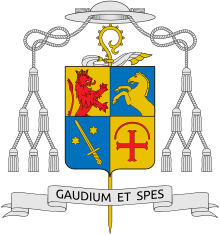Hamborn Abbey

The Hamborn Abbey is a Premonstratensian in the Old Hamborn district of Duisburg. The abbey is located in the diocese of Essen.
History
Today's abbey church dates back to a small parish church, which was built on an estate called "Ham Burn" by the lords of Hochstaden in the 9th century. The city of Hamborn grew around the medieval monastic establishment
Over time, the landowners leased the land surrounding the farm to farmers who settled here. Soon the name of the estate passed to the entire parish. The parish of Hamborn was later elevated to its own jurisdiction.
In 1136AD Gerhard von Hochstaden acquired Hamborn from the Archbishop of Cologne under the assumption that at the site of the parish church, would be made a convent of the Premonstratensians. After the reconstruction of the parish church into the monastery and the construction of the cloister and the actual monastery, was consecrated in 1170.
After the Napoleonic occupation of the Rhineland this monastery was abolished. While the monastic estates fell to the state, the monastery church of Hamborner population survived as a parish church again. During World War II the monastery and abbey church were destroyed by Allied air raids.

As part of the re-establishment of the diocese of Essen in 1958 Hamborn Abbey was in 1959 again re-established and settled by Premonstratensians. In 1994 it was raised to Abbey again by the Premonstratensian.
Today there are 29 canons are Hamborn Abbey, the youngest of whom 23 year, the oldest 83 years old.[1] and the Abbot's prelate is Albert Thomas Dölken O.Praem.[2] The expansion of the convent has been through the steady growth of the community needed, so in 2011 the new building was inaugurated.[2][3]
Hamborn Abbey also has the Abbey School, the Abbey Centre, which serves in particular for holding meetings and cultural events and is equipped with a tourist office, as well as St. John's Hospital. In Abbey the center there is also the restaurant in the old abbey cellar and gatehouse of the abbey. In addition to the abbey church with its sights, the treasury can be visited.
Abbots and priors

- Albert Thomas Dölken, abbot since 1995
- Gottfried Reinhold Menne, prelate 1988-1995 [4]
- Florian Joseph Pröll, abbot of the monastery Schlägl, Dept. Administrator 1965-1988
- Bernhard Mayer, prelate 1959 to 1965
- Abbey closed
- Karl Adalbert von Bayer, Department of 1790 - 1806
- Alexander von der Horst, Abt 1782 - 1790
- Ferdinand von Dunckel, Abt 1757 - 1782
- Johan Arnold of Houven, Abt 1742 - 1757
- Heinrich von Daell, Abt, 1726–1742
- Gottfried von Bemmel, Abt 1724 - 1726
- Wilhelm Heinrich von Bentinck, Abt 1705 - 1724
- Johann von Breidenbach, Abt 1694 - 1705
- Johann von Breidenbach, Abt 1677 - 1694
- Johann Albert Heerdt, Abt 1672 - 1677
- Wilhelm Gottfried von Hyllen, Abt 1647 - 1672
- Stephan of stone, Abt 1619 - 1646
- Wilhelm Ingenhoven to say the least, Abt 1603 - 1619
- Christoph von Husen, Abt 1553 - 1582
- Albert Hane, Abt 1544 - 1553
- Wilhelm von Wyenhorst, Abt 1517 - 1543
- Johann Stael von Holstein, Abt 1487 - 1517
- Elbert van den Bongart, Abt 1483 - 1487
- Hermann von Hiesfeld, Abt 1487
- Heinrich Rinsche, Abt 1451 - 1476
- Dietrich Estas, Abt 1426 - 1451
- Berthold von Brabeck, Abt 1417 - 1424
- Konstantin Kron, Abt 1392 - 1414
- Volkwin, Dept. 12 /. 13 Century
- Heinrich van den Berghe, Abt 1350 - 1388
- Hermann von Holte, Abt 1231 - 1234
- Put Heinrich, Dept. 1325 - 1345
- Johann, Abt 1321 - 1322
- Arnold, Abbot 1314 - 1318
- Gerhard, Abt 1308
- Christian, Abt 1306 - 1310
- Drudo, abbot to 1301
- Conrad, Abt 1297 - 1299
- Gottfried, abbot in 1295
- Laurentius, Abt 1287 - 1291
- Johann, Abt 1281 - 1290
- Gottschalk of Befreyt, abbot to 1272
- Dietrich, abbot to 1268
- Philipp, Abt 1252
- Friedrich, Abt 1216 - 1230
- Dietrich, Propst by 1208
- Gottfried, abbot 1195 - 1200
- Allardus, Abt 12th century
- Nicholas Provost 12th century
- Gernod, Propst 1157 - 1166
- Lambert, provost in 1147
Gallery
 Cloisters
Cloisters- Cloisters
- Cloisters
- Inside Abbey Church
 Abbey Church Organ
Abbey Church Organ
Organ
The organ in the abbey church was built in 1986 by a monk from Ueberlingen. The instrument has 45 registers with 3181 pipes on three manuals and pedal.[5]
References
- ↑ Christian Darius (12 April 2014). "Kloster Magdeburg". kloster-magdeburg.de.
- 1 2 Administrator. "Unser Dienst heute". abtei-hamborn.net.
- ↑ "Hell und offen für Neuzugänge" (PDF). Abtei-hamborn.net. Retrieved 2015-11-03.
- ↑ Christian Darius (18 October 2007). "Kloster Magdeburg". kloster-magdeburg.de.
- ↑ Denis Wollenhaupt (W-SYS Göttingen) http://w-sys.info. "Orgel Disposition Abteikirche St. Johann in Duisburg-Hamborn - Orgelbau Mönch Überlingen". moench-orgelbau.de.